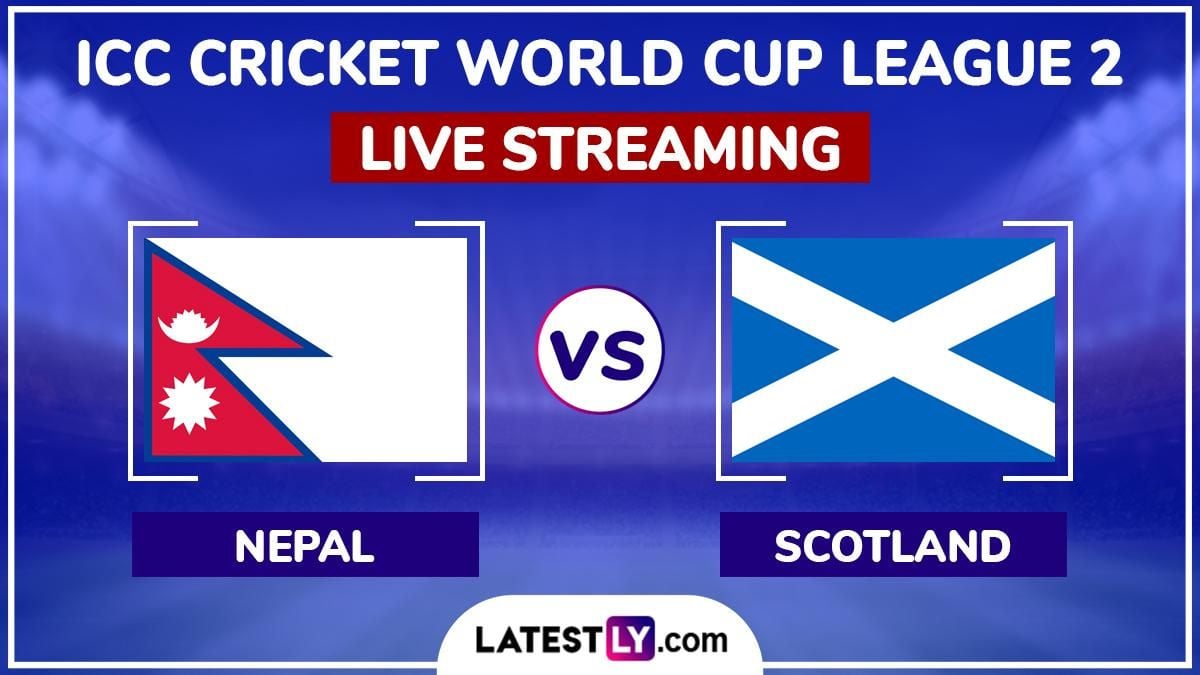Cricket
Nepal Gears Up For Crucial Clash Against Scotland

Nepal and Scotland squared off on November 4, 2024, during the ICC Cricket World Cup League Two at Grand Prairie Cricket Stadium, Texas, igniting excitement among cricket fans. This match was pivotal for both teams, with Nepal sitting at the bottom of the table and Scotland vying for the top positions.
Nepal, ranked seventh among the eight competing teams, faced the challenge of improving their wretched standing, which paled against Scotland, who had established themselves solidly within the top three contenders. This game was not just another matchup; it was an opportunity for Nepal to showcase their grit and potential against competitors they had previously bested.
Historically speaking, the two teams had met earlier during the league, where Nepal emerged victorious by five wickets. The anticipation for this rematch was palpable, especially as both teams had recently undergone mixed results. Nepal’s last game ended poorly, with the USA defeating them by 37 runs, and they were desperate to shake off the past and seize this opportunity.
Scotland, on the other hand, came off a strong performance, where they dominated the USA, scoring 317 runs withf Captain Richie Berrington leading the charge, combined with Brandon McMullen’s exceptional 151 runs off just 140 balls. With confidence running high after such a performance, they were relishing the chance to capitalize on Nepal’s falters.
The pitch at Grand Prairie Stadium offered some intrigue, having historically favored pace bowlers, especially during the morning conditions. The ground presented challenges, where run rates fluctuated considerably; the average score during the first innings stood at 220. Given this data, both teams were conscious of the significant role the conditions could potentially play.
Before the match, the captains took center stage. Nepal’s Rohit Paudel lost the toss, and Scotland’s Berrington elected to bowl first, putting the pressure on the Nepalese team right from the start. Faced with this challenge, Nepal needed to construct a solid innings but found themselves in somewhat of a precarious position considering their recent batting inconsistencies.
Both teams revealed their lineups with Nepal including Anil Sah, Aasif Sheikh, and Sandeep Lamichhane, with Lamichhane being particularly notable for his ability to turn games with his spin bowling. Meanwhile, Scotland fielded Andrew Umeed and the red-hot Brandon McMullen, whose recent form was something they desperately wanted to maintain.
The live match took the spotlight, where cricket fans could readily catch the action. Streaming services like ICC.tv provided platforms for fans to engage with the game. The stakes were immense, especially for Nepal who needed to mitigate the embarrassment of their previous losses. Winning this match was not merely about points; it was about pride.
Scotland’s bowling unit, including potential game-changer Brad Currie, was expected to capitalize on the conditions and pressurize the Nepali batsmen from the get-go. Nepal would have to counterbalance their approach and seize any moment of vulnerability from their opponents.
The early overs proved key as Nepal struggled initially against Scotland’s aggressive bowling. They faced early dismissals which left them battling to reclaim momentum. Crucial partnerships were necessary to get the runs flowing, but Scotland’s strategy seemed to pay off as they exploited the early conditions effectively.
Nepal eventually found some stability, with the top-order batsmen trying to anchor the innings, but chinks started to appear once again as wickets fell at regular intervals. Scotland’s McMullen was hovering as potential match-winner with his skills as both batsman and bowler, showcasing how versatile he could be during the match.
Eventually, tension escalated throughout the innings, as both teams were acutely aware of the consequences each over posed. Nepal’s intent began to clash with Scotland’s dominance, and as the match unfolded, each run became more precious, each wicket more costly.
Fans were glued to their screens, awaiting every ball bowled and every run scored, exemplifying the joy and drama of live cricket. The sparks between the two teams suggested not just the significance of the match itself but the tantalizing prospects for future encounters.
Despite the formidable competition, passions ran high as players from both sides displayed their dedication and discipline, confirming cricket’s position as not just sport, but also as drama and entertainment.
Scotland, having already established strong performances heading to this match, was adamant about keeping the pressure firmly on after their previous victories, narrowly focusing on the finish line of this tournament. For Nepal, this match was of utmost importance, not just to recover from past misfortunes but to demonstrate improvement on the international stage.
The closing moments of the match got even more thrilling, with Nepal clinging to their hopes, striving hard against Scotland’s advancements. A significant push was needed to keep their fans dreaming of victory as they battled on.
The Cricket World Cup League Two proved to be more than just numbers on a scoreboard; it was about the spirit, resilience, and the sheer will to overcome challenges, drawing together cricketing nations through the collective love for the game.
This match would be seen as pivotal for the teams involved, where the outcome was not just about the points but the pride of the players, shaping the narrative of their cricketing journeys, all watched by eager fans around the world. Would Nepal be able to snatch victory against the odds, or would Scotland maintain their rising momentum to edge closer to the top? Only time would tell, and the game continued to captivate those involved.









